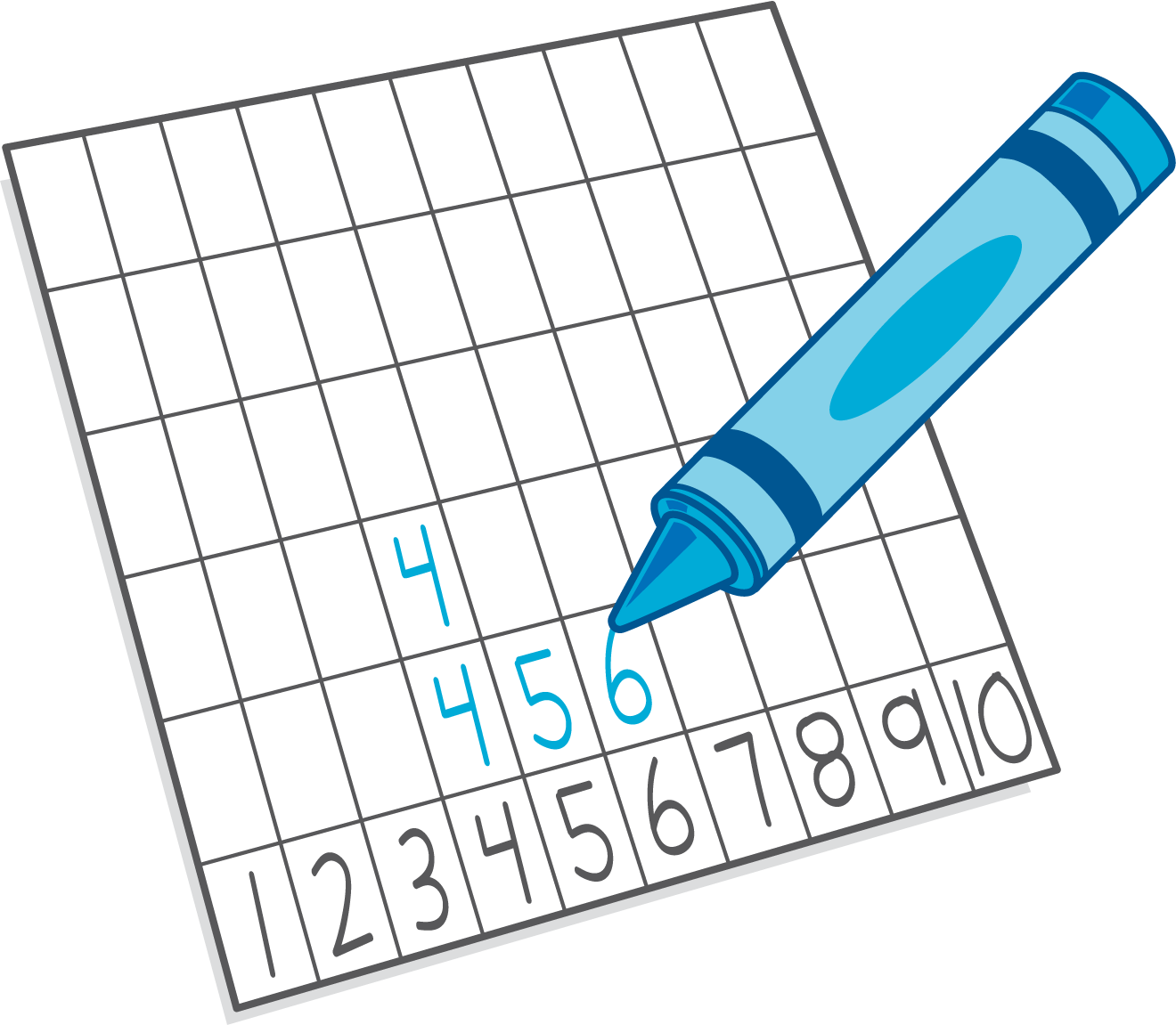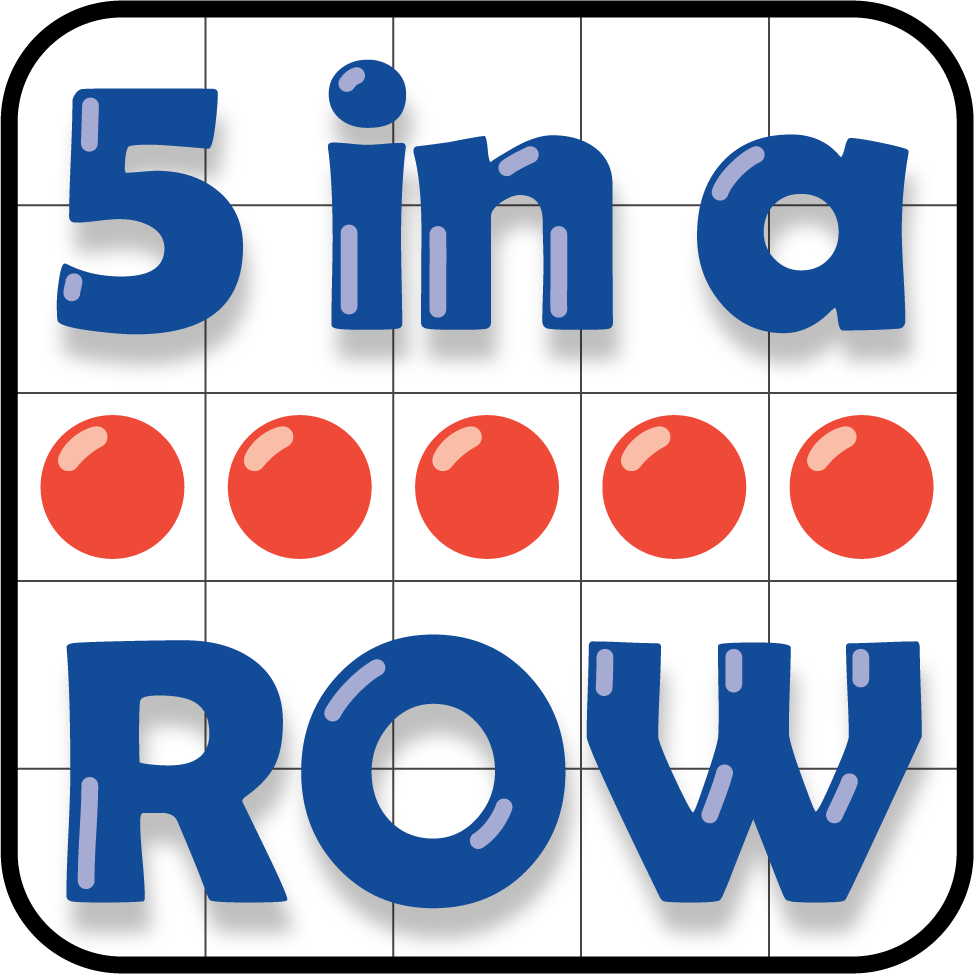Lesson 3
Add 1 or 2
Warm-up: How Many Do You See: Dot Cubes (10 minutes)
Narrative
Launch
- Groups of 2
- “How many do you see? How do you see them?”
- Flash the image.
- 1 minute: quiet think time
Activity
- Display the image.
- “Discuss your thinking with your partner.”
- 1 minute: partner discussion
- Record responses.
Student Facing
How many do you see?
How do you see them?




Student Response
For access, consult one of our IM Certified Partners.
Activity Synthesis
- “How did you know how many dots there are in all?”
- Consider asking:
- “Who can restate the way _____ saw the dots in different words?”
- “Did anyone see the dots the same way but would explain it differently?”
- “Does anyone want to add an observation to the way _____ saw the dots?”
Activity 1: Introduce Five in a Row: Addition and Subtraction, Add 1 or 2 (20 minutes)
Narrative
The purpose of this activity is for students to learn the first stage in the center, Five in a Row. In this stage, students pick a card and choose to add 1 or 2 to the number on their card. They place a counter on the sum on their game board. The first person to get five counters in a row wins. Students begin to notice that when they add 1 to any number, the sum is the next number in the counting sequence, and when they add 2, the sum is two numbers more in the counting sequence (MP7, MP8).
The game board will be used again in upcoming lessons. Consider copying on cardstock or laminating for future use.
Advances: Representing, Conversing
Required Materials
Materials to Gather
Materials to Copy
- Five in a Row Addition and Subtraction Stages 1 and 2 Gameboard
Required Preparation
- Each group of 2 needs a set of Number Cards 0–10.
Launch
- Groups of 2
- Give each group a set of number cards, a game board, two-color counters, and access to 10-frames.
- “We are going to learn a game called Five in a Row, Add 1 or 2. Let’s play a round together.”
- Display the game board.
- “First we need to remove any card with the number 10 on it. We will not use these cards in this game. Now I’m going to flip over a card and decide if I want to add 1 or 2 to the number.”
- Flip over a card.
- “I got a (5) and I’m going to choose to add 2 to my number. What is the sum?”
- “Now I put a counter on the sum on the game board. Then it is my partner’s turn.”
Activity
- “Before you begin, you and your partner need to decide who will use the red side of the counters, and who will use the yellow side. Then take turns flipping over a card and adding 1 or 2 to the number. The first person to get five counters in a row on the game board wins. The counters can be in a row across, up and down, or diagonal.”
- 10 minutes: partner work time
- As students work, consider asking:
- “How did you find the sum?”
- “How did you decide whether to add 1 or 2?”
Student Response
For access, consult one of our IM Certified Partners.
Activity Synthesis
- Display a game board with the center column covered with red counters except for the 8 at the bottom.
- Display the number card 6.
- “This is my game board. I just picked the number 6. Should I add 1 or 2 to the number 6? Why?” (You should add 2 because \(6 + 2\) is 8 and then you could cover the last number in the column and have five in a row.)
Activity 2: Centers: Choice Time (20 minutes)
Narrative
- Counting Collections
- Number Race
- Check it Off
- Five in a Row: Addition and Subtraction
Students will choose from these centers throughout the section. Keep materials from these centers organized to use each day.
Supports accessibility for: Social-Emotional Functioning, Organization
Required Materials
Materials to Gather
Required Preparation
- Gather materials from previous centers:
- Counting Collections, Stage 1
- Number Race, Stage 3
- Check it Off, Stage 1
- Five in a Row: Addition and Subtraction, Stage 1
Launch
- Groups of 2
- “Now you are going to choose from centers we have already learned.”
- Display the center choices in the student book.
- “Think about what you would like to do first.”
- 30 seconds: quiet think time
Activity
- Invite students to work at the center of their choice.
- 8 minutes: center work time
- “Choose what you would like to do next.”
- 8 minutes: center work time
Student Facing
Choose a center.
Counting Collections

Number Race

Check it Off

Five in a Row: Addition and Subtraction

Activity Synthesis
- “How did you and your partner work well together during centers today?”
Lesson Synthesis
Lesson Synthesis
Math Community
Display the math community poster and read the student actions listed under “Doing Math.”
“Which of these did you do today? How did they help you in class?”
“Is there anything else we should add to the poster?”
Cool-down: Unit 1, Section A Checkpoint (0 minutes)
Cool-Down
For access, consult one of our IM Certified Partners.